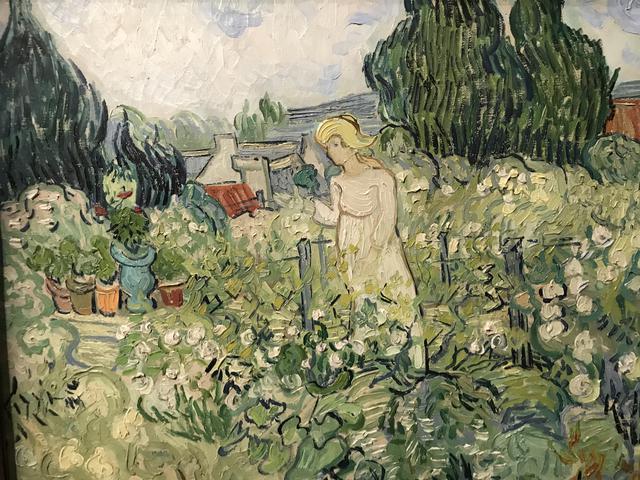Mademoiselle Gachet in her garden in Auvers-sur-Oise

"Mademoiselle Gachet in her garden in Auvers-sur-Oise" is a captivating painting by the renowned artist Vincent van Gogh, depicting Dr. Gachet's daughter, Marguerite, in a serene and picturesque setting. Van Gogh, who settled in Auvers-sur-Oise in 1890 under the care of Dr. Gachet, found inspiration in the beauty of the garden and the young Marguerite. The painting showcases Marguerite dressed in white, resembling a bride or a pure maiden, surrounded by white roses and pale yellow marigolds, creating a harmonious and tranquil atmosphere.
The artist's intention to capture Marguerite's innocence and beauty is evident in the way he portrays her playing the piano or posing in the garden. Despite Dr. Gachet's disapproval of their friendship and his subsequent ban on unsupervised meetings, Van Gogh's connection with Marguerite shines through in the painting. The delicate brushstrokes and vibrant colors used by Van Gogh convey a sense of intimacy and emotion, reflecting the complex relationship between the artist and his subject.
As visitors admire "Mademoiselle Gachet in her garden in Auvers-sur-Oise" in museums or galleries, they are transported to a moment frozen in time, where the beauty of nature and the innocence of youth are captured in a single frame. The painting serves as a poignant reminder of Van Gogh's artistic genius and his ability to infuse his works with depth and emotion. It invites viewers to contemplate the fleeting nature of beauty and the complexities of human relationships, as seen through the eyes of a troubled but brilliant artist.
In conclusion, "Mademoiselle Gachet in her garden in Auvers-sur-Oise" is not just a painting but a window into the soul of Vincent van Gogh, revealing his passion for art, his longing for connection, and his profound understanding of the human experience. It stands as a testament to the enduring power of art to transcend time and space, touching the hearts of all who gaze upon it.
© ChatGPT 3.5